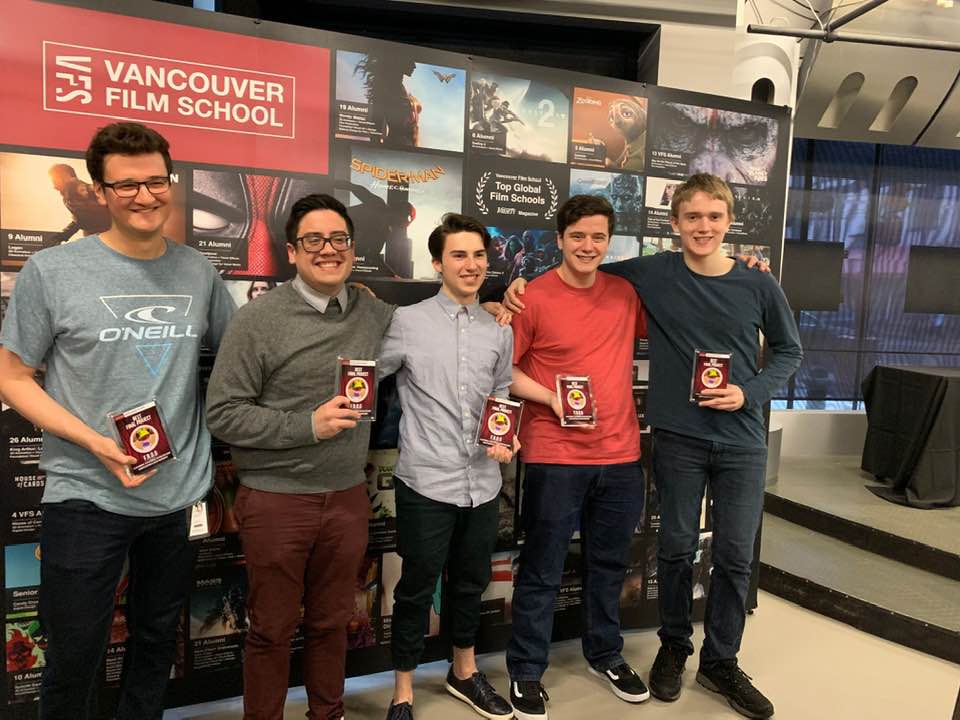Mentoring at Vancouver Film School
Role: Mentor for student’s final projects
Engine: Unity and Unreal Editor 4
When: Once a week over ~4 month period, from 2016-2019
Let’s focus on F.R.O.G., which is a VFS student project made in Unity.
It is one of many games to which I was lucky enough to contribute as a mentor.
Play their gameitch.io page to download F.R.O.G.The creators of F.R.O.G.
Egg in a Bag Games team from right to left:
Nathan Krelekamp (Level Designer)
Tyler Vermeer (Systems/Mechanics Designer)
Alberto Buitrago (Artist)
Elijah Horner (Project Manager)
Justin Kwiatkowski (Programmer)

Team Egg in a Bag Games entered production after prototyping a puzzle game with silly physics mechanics. Its gameplay challenges were bite-size and arranged in a linear sequence like a puzzle game. However, this linear progression was not engaging players. There were immediate player dropoffs on certain levels, but not everyone agreed which ones caused them to quit. That’s when the team asked me if they should pursue open world design as a solution.
First, I identified the problem as one of reducing barriers and increasing exposure to their best content. Feedback about the game’s challenges was not aligned—skill-based and memory challenges were clearly favoured by different gamer profiles. This told me the team still needed to build out more content to continue learning which moments felt the best overall, instead of emphasizing one challenge type.
I encouraged the team to continue building and playtesting bite-sized challenge prototypes of all varieties. I suggested they ignore the contraints of creating open world content for a few more weeks.
We delayed locking down consistent visual language and gameplay mechanics. As a team, they reviewed all the prototype feedback. Then they worked together to select a coherent mix of enjoyable and unique experiences. These were layered over top of each other to create a sandbox world. Also, they built simpler content with fun physics interactions to fill empty areas. I asked them to make more. These interactions leaned into the potential for humour and player agency in their core gameplay.
In the first month after the switch, the team struggled to reach their desired quality for level design. But I supported them as they stayed the course. Their overall outlook brightened after a few more weeks.
Ultimately, they landed on a magic formula all on their own. They used their talents to deliver a unique and charming character, a whimsical world, and a fun experience teeming with puzzle and action elements. This team went on to win the Best Project award for graduating students in their class.
We also interacted after their graduation; though, some members had left by the time they officially formed Egg in a Bag Games. I provided team-building advice while they ran a Kickstarter for their game, and chatted with them about their career options.
Note: My post includes visual content from these sources
https://80.lv/articles/f-r-o-g-developing-a-physics-based-sandbox/
